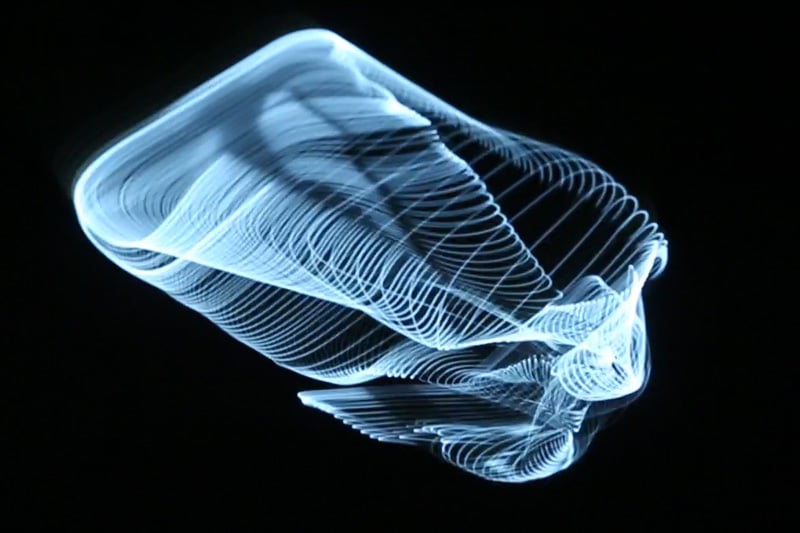In this video, we explore esoteric applications for LZX's video synthesis modules, combining them with other Eurorack modules and a modified Vectrex console for bizarre visualizations reminiscent of the dawn of video art.
The sound setup is focused around a Rossum Electro-Music Assimil8or, Industrial Music Electronics Piston Honda Mk3, and Strymon Magneto—the video portion of our patch relies heavily on the LZX Visual Cortex, Navigator, and Shapechanger. There is also a very special appearance of LZX's new Orion Series Escher Sketch, a stellar controller for LZX or standard Eurorack audio modules. Scope it out below!
What is Vector Rescanning?
Raster manipulation? Vector rescanning? These terms are probably unfamiliar to many—and quite dear to a smaller niche of electronic artists. Vector rescanning & its offshoots are video synthesis techniques from the dawn of video art.
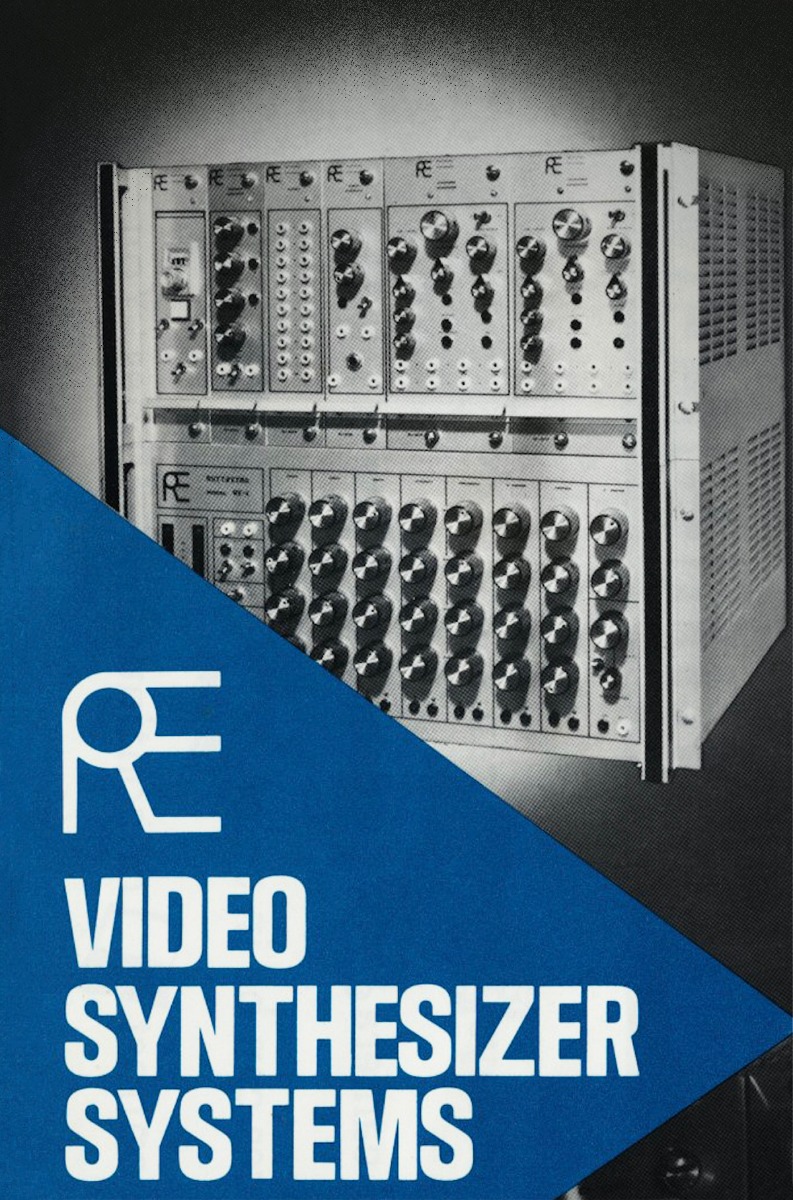 The front of a vintage Rutt-Etra Video Synthesizer Systems product brochure.
The front of a vintage Rutt-Etra Video Synthesizer Systems product brochure.
When new technologies made advanced analog & digital image generation and manipulation possible, artists experimented with new techniques for creating visual art. Around the same time as the dawn of the analog modular synthesizer, advanced video manipulation systems developed, allowing artists to alter and generate images in real time, creating "living paintings" through the window of the cathode ray tube. Artists like Nam June Paik and the Vasulkas made video art in some ways more closely related to painting and sculpture than it was to film. We'll discuss early video art & synthesis techniques at greater length in a future article, but for now, a handful of key ideas are worth mentioning: a few people, and a bizarre instrument.
Around 1973, Steve Rutt and Bill Etra co-invented a device that would grow to define an entire style of visual art and video synthesis: the aptly-named Rutt-Etra Scan Processor. The original idea behind the device was to create an analog computer that would allow for the compression and expansion of video image, making the CRT into a canvas on which images could be resized and repositioned in real time. It marketed toward a wide audience: universities, artists, and forward-thinking marketing firms looking to make attractive moving images.
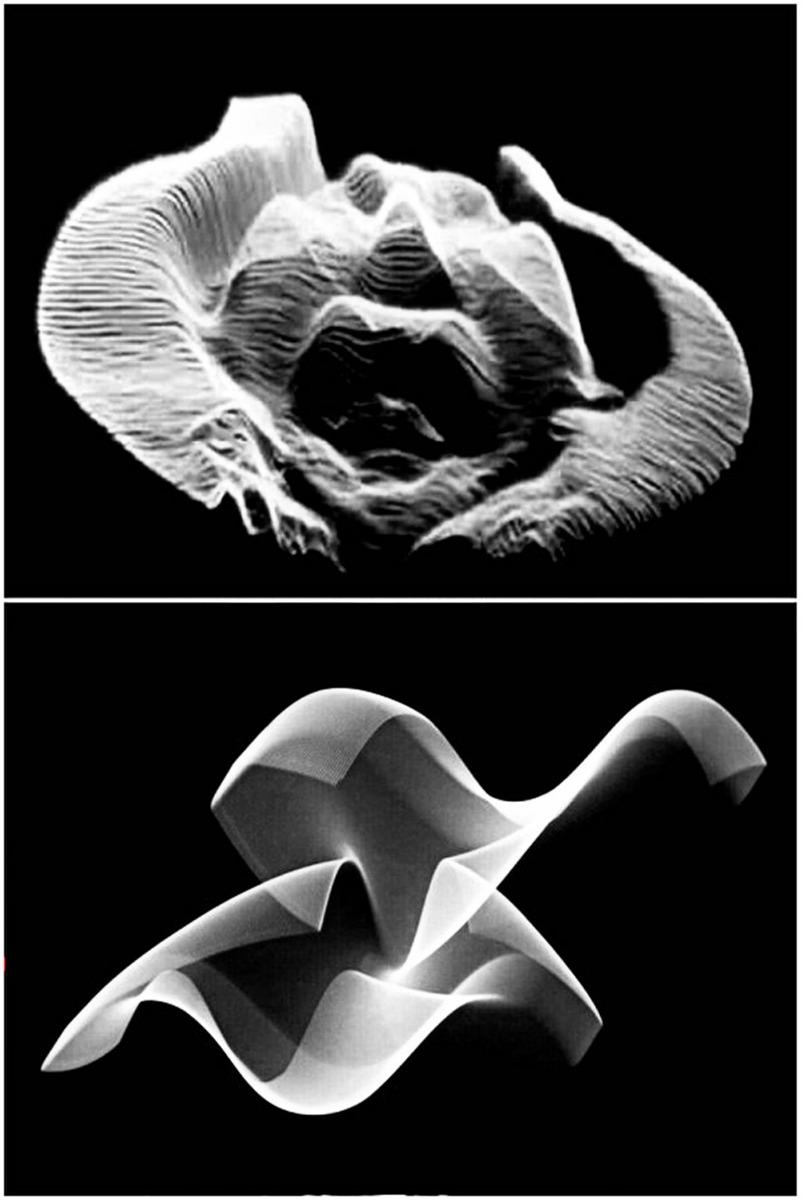 Images from some of the Vasulkas' most iconic scanline processing experiments.
Images from some of the Vasulkas' most iconic scanline processing experiments.
By converting raster-based video into a set of analog signals that could be used to drive a 3-axis display, the Rutt-Etra synthesizer provided a broad range of signal manipulation facilities relatively easy to execute in the analog realm: scaling, inversion, addition, etc. Furthermore, it provided a means of converting an image's brightness into an artificial "depth" dimension. In this way, images could be manipulated in three artificial dimensions—images could be scaled, repositioned, rotated, or entirely transformed. The results are often abstract images with a remarkable sense of contrast and depth, often creating a convincing illusion of depth and impossible bending spaces.
Woody and Steina Vasulka are no doubt the most publicly visible users of the Rutt-Etra synthesizer, having produced an enormous amount of work with the peculiar machine—check out their Transformations and Woody's Art of Memory for some spectacular examples of what can be done with the Rutt-Etra. Because the synthesizer's parameters could be altered with control voltages in the same scale as typical modular synthesizers, it was common for the Vasulkas and others to use audio synthesizers as means of injecting complex control information into the images.
Despite its now cult-like following, the Rutt-Etra synthesizer was not a tremendous commercial success. Other similar devices were made around the same time (including the quite similar, but still quite rare OEI Scanline Processor), but few survive: and as such, these scanline manipulation techniques were largely unavailable to artists for decades.
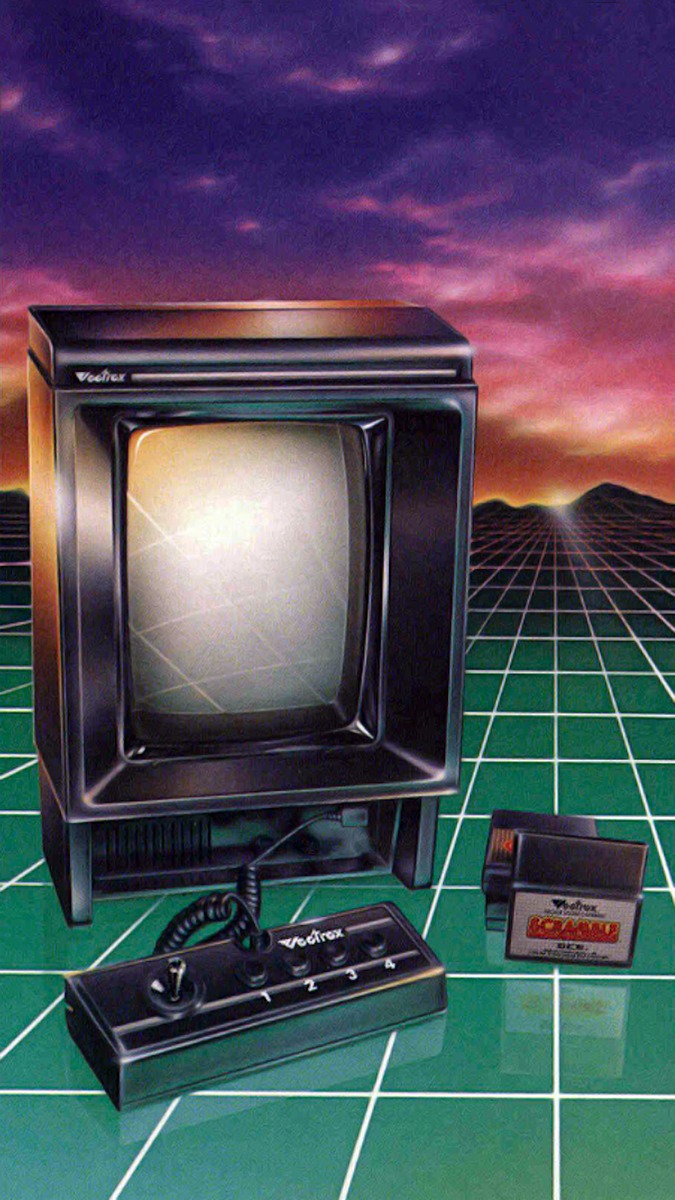 Image from a vintage Vectrex product brochure.
Image from a vintage Vectrex product brochure.
The Vectrex
The Vectrex is yet another peculiar relic from the history of the video industry—a self-contained video game console with a monochrome vector-based display. General Consumer Electronics originally released the Vectrex in 1982; but GCE was quickly purchased by Milton Bradley in the following year. Subsequently, the infamous game crash of 1983 took hold and the Vectrex was regrettably discontinued in early 1984.
But people still love it. Its weird vertical orientation and crisp vector display are a reminder of a peculiar time in computer graphics; even the built-in game Mine Storm, a variant on the classic Asteroids arcade game, has a remarkable sense of depth and contrast seemingly impossible to create on raster-based displays. Despite the inherent blockiness of the images, something about the cleanly drawn, continuous vector lines remains visually striking to this day.
The Vectrex has enjoyed prominent attention in the video synthesis community over the past several years because of a relatively simple modification that decouples the internal game engine from the display itself. By removing some cables and adding some jacks, it becomes possible to drive the Vectrex display via Eurorack-level control voltages, turning it into a strange and dynamic oscilloscope-like visualizer for any sound or CV. One input for X-axis position, one for Y-axis position, and one for brightness are enough to create everything from traditional Lissajous figures to complex evolving imagery that looks like it emerged straight from Jupiter and Beyond the Infinite. (We must state that, while the modification required to use a Vectrex with external CV is relatively simple, it can potentially expose you to extremely high voltages. Do not attempt the modification if you are not a qualified technician familiar with the protocol for safe CRT discharge.)
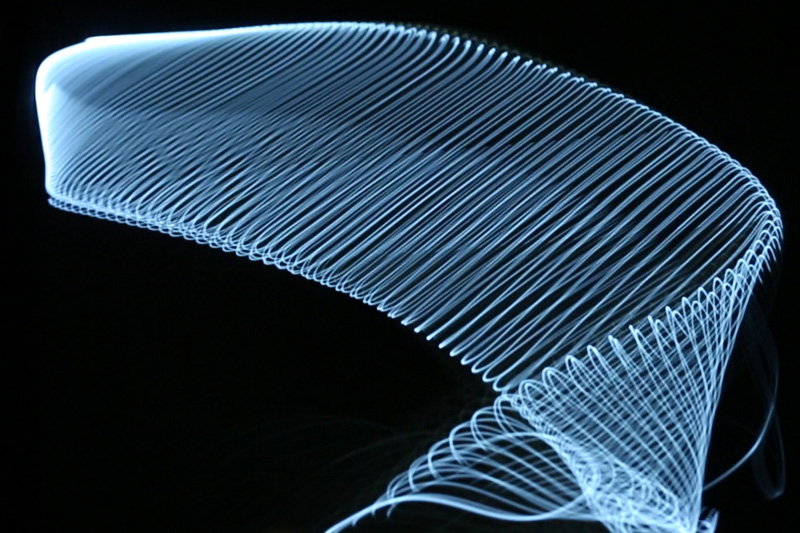 Scanlines bent in space via LZX Navigator, Shapechanger, and Vectrex.
Scanlines bent in space via LZX Navigator, Shapechanger, and Vectrex.
LZX Industries and Vector Rescanning
Because of my personal fascination with classic video synthesis, I have personally kept a close eye on LZX Industries for years. Their offerings have only become more comprehensive and advanced as time has gone on, and my imagination went reeling with the release of their Navigator and Shapechanger modules. These modules together form a means of simple shape generation and image rotation/positioning—but beyond that, they actually provide basically all the tools necessary to pull off raster-to-vector-style conversion that a 3-axis display requires for Rutt-Etra Style performance.
When the above patch surfaced on LZX's site some time ago, we initially tried it out with a small oscilloscope—but having recently acquired a Vectrex, we opted to give it another go. The results were fantastic: by simply using an inexpensive CCTV camera with LZX's recommended patch, we were able to get a Rutt-Etra style setup with much more easily available components.
 The LZX Orion Escher Sketch, with striking infinity mirror touch surface.
The LZX Orion Escher Sketch, with striking infinity mirror touch surface.
In our jam video, we used a hybrid audio/video Eurorack system in Pittsburgh's Structure 344 case. The vector display's X and Y signals are scaled and offset via the Structure 344's built-in attenuators and offsets, making it easy to scale and position the final image as desired. The Navigator and Shapechanger's various parameters are manually performed via the Escher Sketch, a new addition to the LZX lineup which offers a striking means of tactile control. With X, Y, Pressure, and Directional Velocity outputs, it seemed like the perfect controller for vector rescanning performance. (We also couldn't resist adding some snazzy mirroring effects after the fact...it looked too cool to pass up.)

We'll write more extensively about oscillographics, vector rescanning, and vintage video synthesizers in the future—but for now, enjoy these first experiments recreating the Rutt-Etra effect with LZX's incredible offerings. Thanks to LZX Industries for the patch idea—and happy exploring to all.

